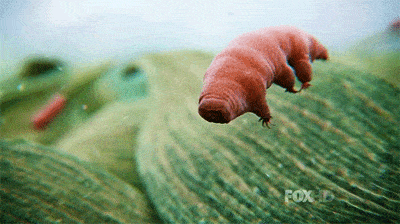Tardigrades or water bears, as they’re often adorably called, are some of the most amazing animals out there. Considered the most extreme animal on the planet, the water bear can withstand intense heat, cold, pressure, radiation, even the vacuum of space. There’s a lot we could learn from it and a recent genome sequencing of the animal’s DNA might explain why it’s so freaking indestructible.
The animal that can withstand outer space and can come back from the dead
In 2007, researchers attached thousands of the 1mm-long tardigrades to a satellite and blasted them into space. Weeks later, after the satellite returned back to Earth, researchers found many of them had survived and, remarkably, some females even laid eggs — in space. The newly hatched younglings were healthy.
Tardigrades, who first appeared some 500 million years ago during the Cambrian, can even come back from the dead, as Japanese cryobiologists recently demonstrated. The Japanese researchers thawed some water bears that had been frozen for 30 years and found some of the defrosted creatures were still alive. What’s more, they could even manage to reproduce with one laying 19 eggs of which 14 successfully hatched.
To pull off these death-defying feats, tardigrades employ a couple of tricks. When faced with the prospect of annihilation, either due to lack of food or due to exposure to absolute zero temperatures, the water bear essentially dries out and retracts its head and its eight legs. It then enters a deep state of suspended animation that closely resembles death. Its metabolism slows to 0.01% of the normal rate and the body becomes almost devoid of water. The video below shows how much the water bear shrinks when deprived of water.
https://www.youtube.com/watch?time_continue=6&v=09U9tc-aaek
This suspended state can be maintained for decades, as the Japanese researchers proved earlier, and the water bear can be revived when placed in contact with water.
The thing is, this process damages the DNA yet the extremophiles don’t seem to mind at all. In fact, they seem to flourish in spite of this.
Previously, researchers at University of North Carolina (UNC) at Chapel Hill sequenced a tardigrade’s genome and found 17.5 percent of it was comprised of foreign DNA. This means that some of its genes come from entirely different species. Most species, including humans, don’t have more than one percent foreign DNA in their genomes, so tardigrades have more foreign DNA than any other species. The previous record-holder was a microscopic animal known as a rotifer.
“Animals that can survive extreme stresses may be particularly prone to acquiring foreign genes — and bacterial genes might be better able to withstand stresses than animal ones,” Thomas Boothby, first author of the study said.
The UNC researchers found tardigrades had 6,000 foreign genes, mainly from bacteria. There are many bacterial species that can withstand extreme pressure and heat, which might explain the tardigrades’ resilience. Yet the study didn’t answer how the water bears cope with having their DNA damaged to the point of obliteration.
A new study published in the journal Nature Communications this week might be revealing in this respect. University of Tokyo researchers sequenced the genome of a water bear (Ramazzottius variornatus) and found the small aquatic animal has a gene coding a single protein which confers resistance to DNA damage in human cultured cells.
The protein is unique to the tardigrades and helps cells tolerate DNA damage. Besides this mysterious protein, the team led by Takekazu Kuieda found other genes responsible for the tolerance of stressful environments.
It’s still unclear how the tardigrades’ unique adaptations function at the molecular level, but evidence is piling up that these tiny critters evolved unique strategies to cope with stressful conditions. Until we know for sure what makes the water bear such an extreme hero, here’s a cute video of one such creature walking on moss.










